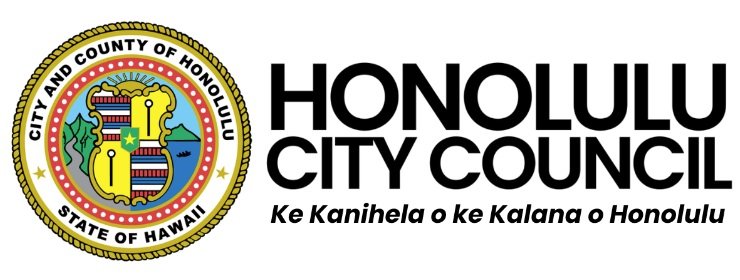City Council Takes Action on Stream Maintenance Initiative
(HONOLULU, HAWAI‘I) – O‘ahu stream maintenance is crucially important to the Honolulu City Council. Seeking to prevent a repeat of historic damaging flooding around O‘ahu, the Council unanimously passed legislation Wednesday to urge the City administration to create a stream-cleaning schedule for city-owned streams and non-stream drainage infrastructure.
Introduced by Councilmember Heidi Tsuneyoshi and Council Chair Tommy Waters, the detailed measure delineates some of the most damaging flooding events on O‘ahu that were caused by intense rainfall events, including the January flooding in East Honolulu, the March 9 flooding in Hale‘iwa as well as other areas, the monetary damage from which is still being assessed; the New Year’s Eve flood of 1978 that caused $34 million in damage in residential areas and the Oct. 30, 2004 flood that caused $80 million in damage at the University of Hawai‘i at Mānoa.
“The people of my district, on the North Shore and along the Windward Coast have suffered far too much and for far too long,” said Councilmember Heidi Tsuneyoshi, who represents District 2. “Regular maintenance of City streams and floodways is a government responsibility – and we owe it to our people to take care of them – not just now, but going forward.”
With only one crew of five people to service the entire island’s streams in addition to other duties, lack of personnel was the main challenge cited in providing more robust stream maintenance. On April 20, Chair Waters held a hearing on the City’s efforts in filling 1,144 vacancies, including 290 alone in the Department of Facility Maintenance, the department responsible for maintenance of City streams. Chair Waters has proposed adding positions, equipment, and emergency funds to assist in stream clearing before storms to the budget currently going through the City Council.
“This measure is part of a larger initiative by the City Council to ensure that O‘ahu’s streams are maintained, to mitigate the risk to residential neighborhoods from ‘rain bombs’ and other impacts of climate change,” said Council Chair Tommy Waters. In 2018, flooding and mudslides in ʻĀina Haina damaged more than 120 homes, displacing residents. “This is about keeping our communities and our residents safe.”
Honolulu City Council Chair Tommy Waters represents District 4, which includes Hawaiʻi Kai, Kuliʻouʻou, Niu Valley, ʻĀina Haina, Wailupe, Wai‘alae Iki, Kalani Valley, Kāhala, Wilhelmina Rise, Kaimukī, portions of Kapahulu, Diamond Head, Black Point, Waikīkī and Ala Moana Beach Park.
Councilmember Heidi Tsuneyoshi represents District 2, which includes Mililani Mauka, Wahiawā, Mokulēʻia, Waialua, Haleʻiwa, Pūpūkea, Sunset Beach, Kahuku, Lāʻie, Hauʻula, Punaluʻu, Kahana, Kaʻaʻawa, Kualoa, Waiāhole and Kahaluʻu.
Res21-77: https://hnldoc.ehawaii.gov/hnldoc/document-download?id=10604
